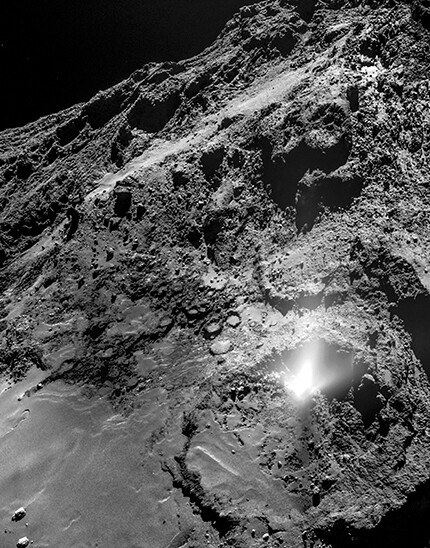Inside a comet’s outburst
DOI: 10.1063/PT.3.3829
Numerous sudden, short-lived outbursts of high-speed dust have been observed to come from the surface of comets, and a variety of models have been proposed to explain them. As a comet tumbles through space, for example, ejections that occur just after dawn could arise when sunlight sublimates water that had frozen out just below the surface the night before. Other outbursts may be due to cryovolcanism. In its two and a half years of orbiting comet 67P/Churyumov–Gerasimenko, the European Space Agency’s Rosetta spacecraft recorded many outbursts, including the one shown here from 3 July 2016. Whereas most were detected by only one of Rosetta’s 11 instruments, this outburst was captured by five as the craft passed through the dust plume.

The rich data haul included the plume’s spectrum and brightness, the mass and velocity of several dust particles, microscopic images of one fragmented particle, and rare high-resolution images of the ejection site. Beyond providing topographical details, the images could be compared with those taken on previous flyovers. From the multifaceted measurements, Jessica Agarwal of the Max Planck Institute for Solar System Research and colleagues could infer a coherent picture of the event. They found that although the outburst began just after dawn, solar-driven sublimation couldn’t explain the observed dust production, so additional energy stored beneath the surface must have been involved. (J. Agarwal et al., Mon. Not. R. Astron. Soc. 469, S606, 2017, doi:10.1093/mnras/stx2386
To submit candidate images for Back Scatter visit http://contact.physicstoday.org
